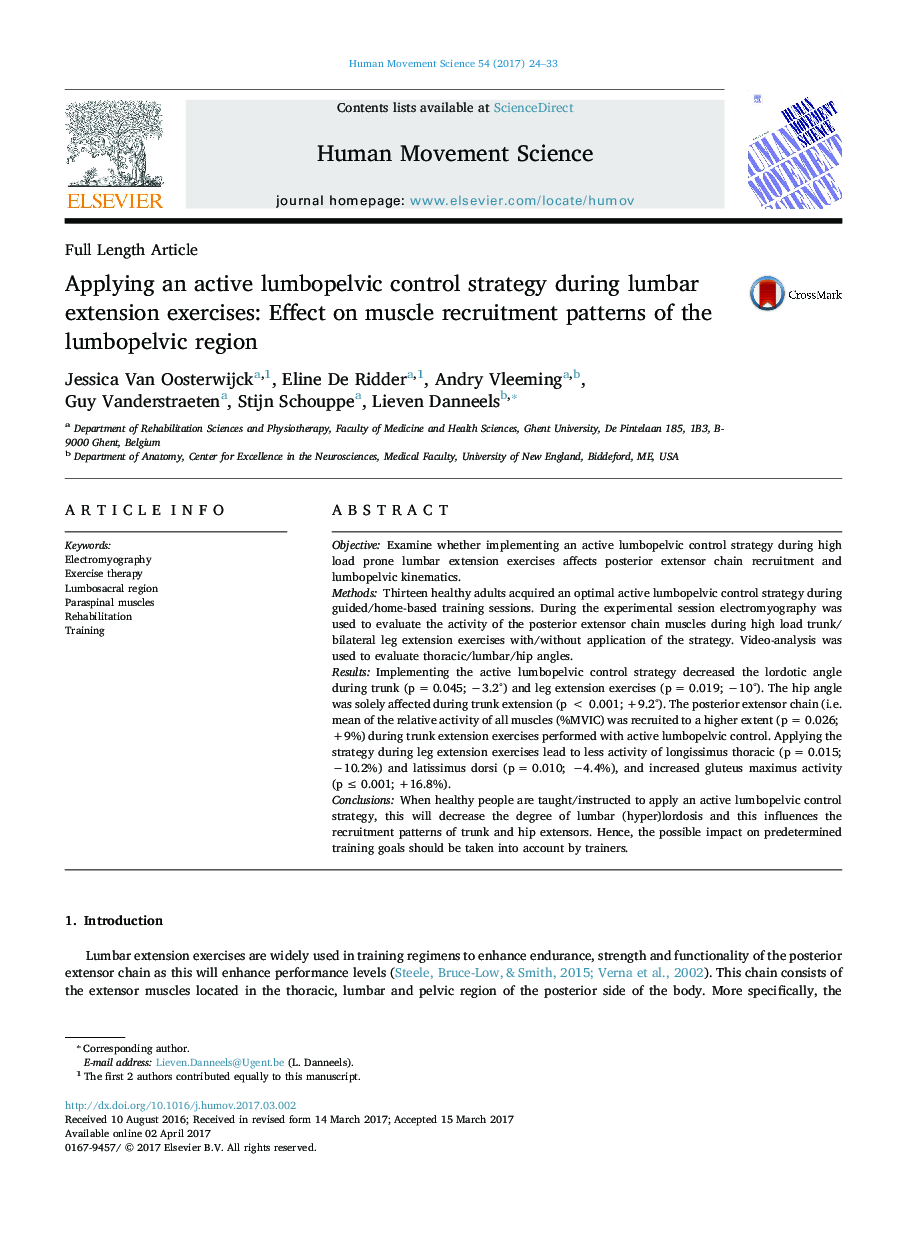| Article ID | Journal | Published Year | Pages | File Type |
|---|---|---|---|---|
| 5041963 | Human Movement Science | 2017 | 10 Pages |
â¢Prone extension exercises were studied with/without active lumbopelvic stabilization.â¢Effects on muscle recruitment and spinal kinematics were reported.â¢Posterior extensor muscle activity depends on the type of prone extension exercise.â¢The lumbar lordosis reduced when exercises were performed with stabilization.â¢Applying the stabilization strategy altered the muscle recruitment patterns.
ObjectiveExamine whether implementing an active lumbopelvic control strategy during high load prone lumbar extension exercises affects posterior extensor chain recruitment and lumbopelvic kinematics.MethodsThirteen healthy adults acquired an optimal active lumbopelvic control strategy during guided/home-based training sessions. During the experimental session electromyography was used to evaluate the activity of the posterior extensor chain muscles during high load trunk/bilateral leg extension exercises with/without application of the strategy. Video-analysis was used to evaluate thoracic/lumbar/hip angles.ResultsImplementing the active lumbopelvic control strategy decreased the lordotic angle during trunk (p = 0.045; â3.2°) and leg extension exercises (p = 0.019; â10°). The hip angle was solely affected during trunk extension (p < 0.001; +9.2°). The posterior extensor chain (i.e. mean of the relative activity of all muscles (%MVIC) was recruited to a higher extent (p = 0.026; +9%) during trunk extension exercises performed with active lumbopelvic control. Applying the strategy during leg extension exercises lead to less activity of longissimus thoracic (p = 0.015; â10.2%) and latissimus dorsi (p = 0.010; â4.4%), and increased gluteus maximus activity (p â¤Â 0.001; +16.8%).ConclusionsWhen healthy people are taught/instructed to apply an active lumbopelvic control strategy, this will decrease the degree of lumbar (hyper)lordosis and this influences the recruitment patterns of trunk and hip extensors. Hence, the possible impact on predetermined training goals should be taken into account by trainers.
